Gallery Network
7 Questions for Artist Jumper Maybach on His Colorful New D.C. Commission
Installed at 1900 K Street this past February, the work is his largest multi-panel piece to date.
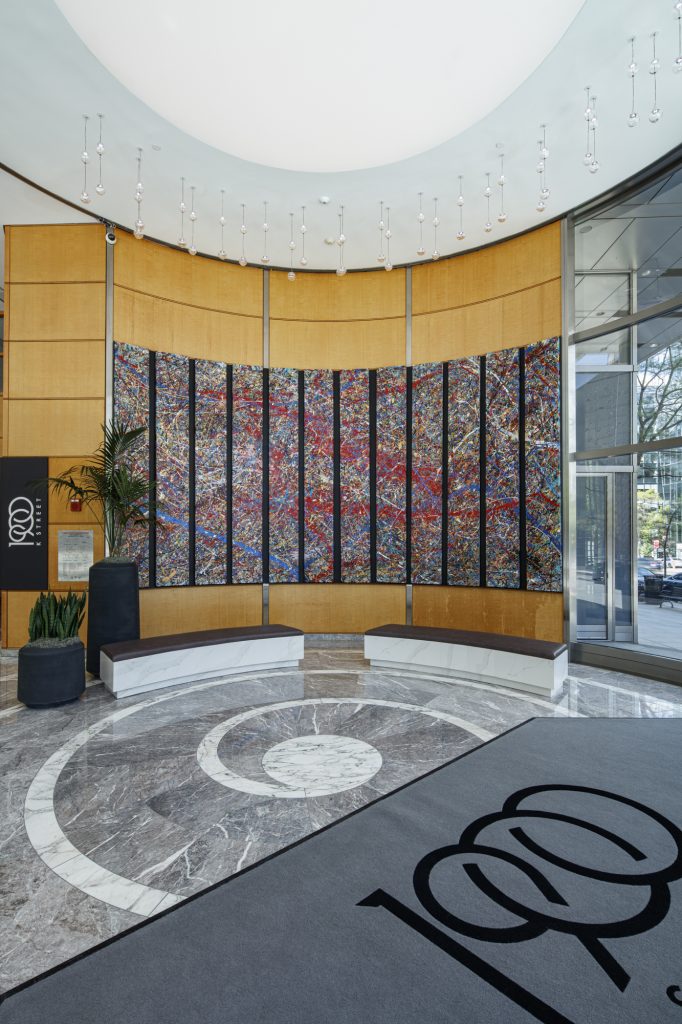
Installed at 1900 K Street this past February, the work is his largest multi-panel piece to date.

Artnet Gallery Network

Earlier this year, American artist Jumper Maybach completed a major site-specific artwork, which is installed at 1900 K Street in Washington, D.C.—his second commission in the city. While his first piece, situated in the Evening Star Building, is a large-scale diptych, the present work is his first polyptych, comprising 12 panels.
Commissioned by Hines Real Estate Management Group and included in the permanent collection of TIAA Global Real Estate and Nuveen Real Estate, the large-scale piece is representative of Maybach’s distinct artistic sensibilities. Replete with a palette that taps into the potential of primary colors, and employing a technique of pigment layering that echoes the Abstract Expressionists, the painting was inspired by the artist’s ethos of tolerance.
We recently spoke with Maybach to learn more about what went into creating the monumental work, and how much large-scale commissions might figure in his practice moving forward.
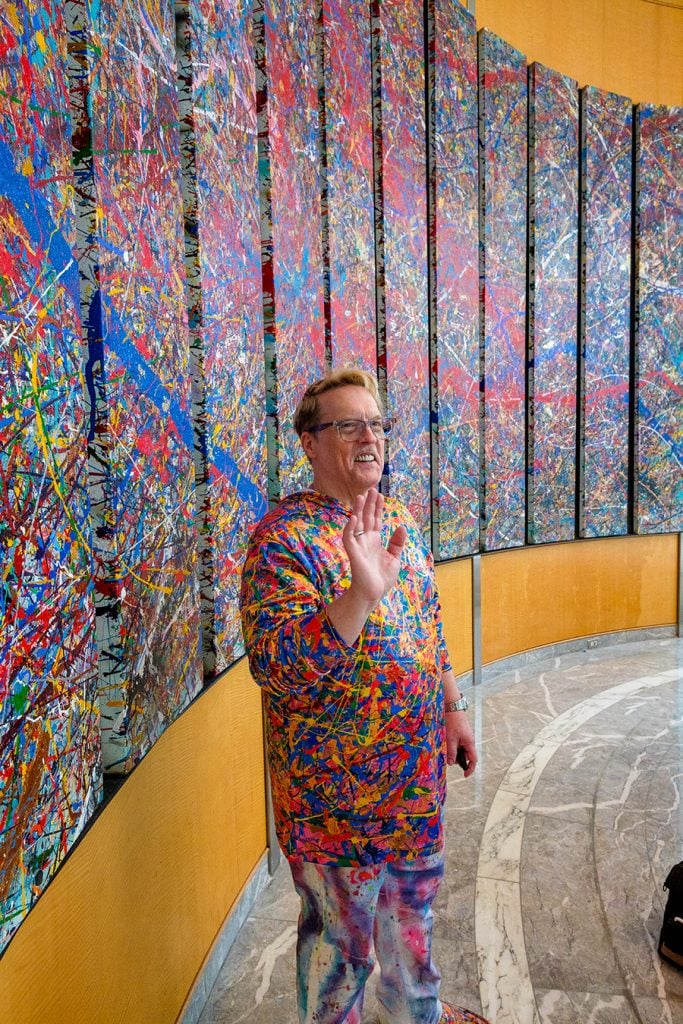
Jumper Maybach. Courtesy of the artist.
Your second commissioned work in Washington, D.C., recently went up. Can you tell us a bit about the piece and some of its themes?
My newest work is in the iconic 1900 K Street building, designed by César Pelli. The piece is a large-scale polyptych, which was engineered to fit perfectly into the circular rotunda in the grand, glass-encased main entrance, visible from every angle as you approach the building.
Working with bold, primary colors, I created this artwork via dynamic movement and gesture. I hope to evoke a sense of excitement in the office workers, passers-by, and visitors to the building. The building itself is sheathed in all glass, with warm wood tones in the lobby. The reds and blues in the artwork help to warm up the rotunda space even more, anchoring it as a destination.
How did you first approach this commission? Did you already have ideas in mind that you applied to this project, or did you start from scratch?
The building owners who commissioned the work were familiar with my previous installation in D.C., in the historic Evening Star building. Tapping into those relationships and that previous work, the owners and I had several conversations about their vision and goals for the piece. We sent them a number of different colorways based on my recent “Astral” and “Celestial” series and collaborated on the final color choices. I see the new piece as in conversation with the other work, which features calming, muted blues and greens.
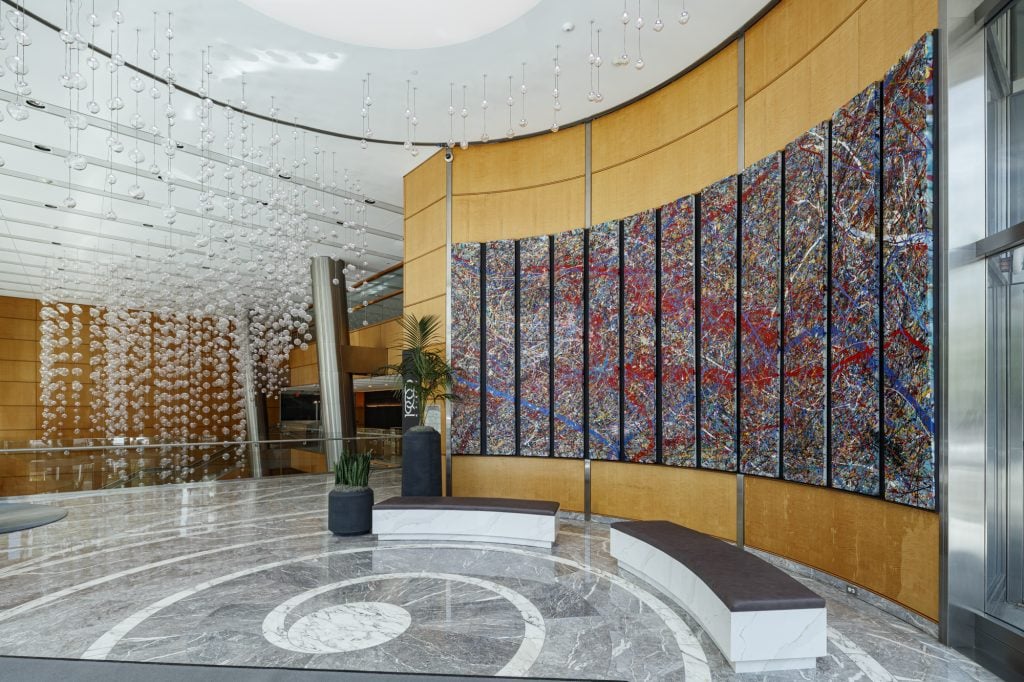
Installation view of 1900K Building (2024) in Washington, D.C. Photo: Jim Tetro. Courtesy of the artist.
From a technical standpoint, what went into bringing this piece to life? How long did it take to create the works and install them?
Bringing this particular piece to life was a big challenge, considering that it is installed on a curved wall in the lobby’s entryway rotunda. We had to take the size and gradient of the curve into account as we conceptualized how to put the piece together in a way that felt like the art fit naturally in the space. We built the work as a 12-paneled polyptych, with each hand-built and stretched canvas exactly 18-inches wide and 11-feet tall. Each panel lays flat against the wall, with space between each panel accommodating the curve. After figuring out the math and dimensions needed to execute the piece, I spent a month making the panels themselves and creating the art. The piece took two days to install.
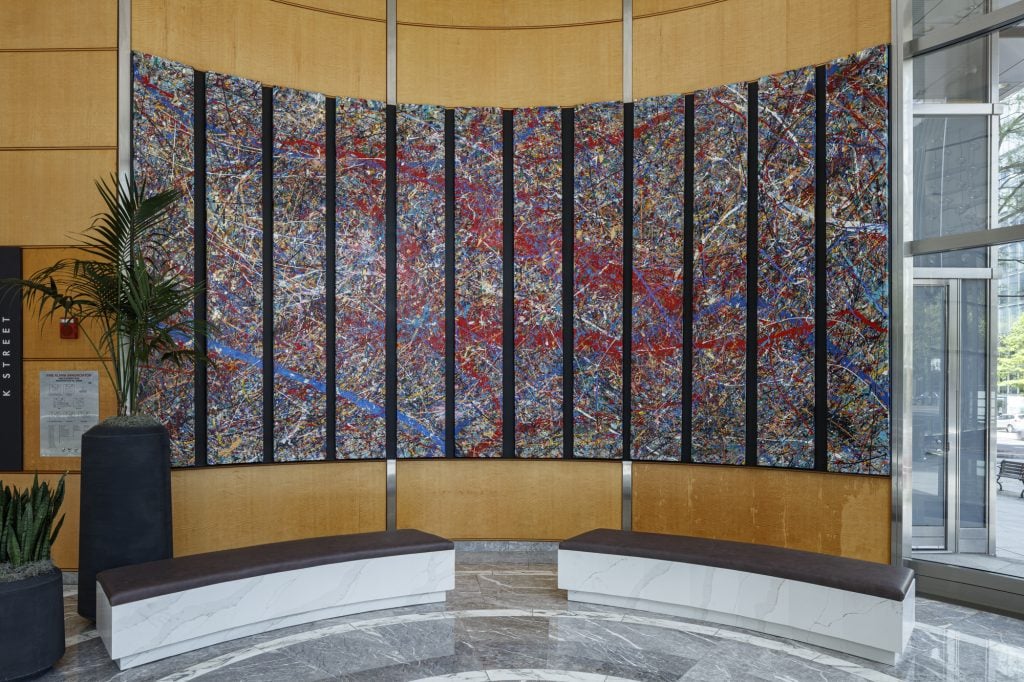
Installation view of 1900K Building (2024) in Washington, D.C. Photo: Jim Tetro. Courtesy of the artist.
This was cited as you first multi-panel piece. Is this a format that you’d like to use again or incorporate into your practice moving forward?
Yes, this was my first polyptych. My piece at the Evening Star building is a diptych, but this was by far the most complex and interesting challenge in terms of the technical and engineering aspects I had to bring into the work. I’m always open to working with unique spaces and creating work that speaks specifically to these spaces.
What impression or takeaway would you like for viewers and visitors to have?
The rotunda itself takes your breath away, it’s truly a beautiful piece of architecture. I hope that viewers stop for a moment to appreciate the movement and boldness of the colors and expression in the work. Because the building is on a corner, you see it from multiple places as you approach on K Street, and it really serves to punctuate the austere and formal urban environment, there on one of the most powerful corridors in the world. When you see it lit up at night, it shines like a beacon. I would like viewers to feel energized and joyful as they interact with the piece.
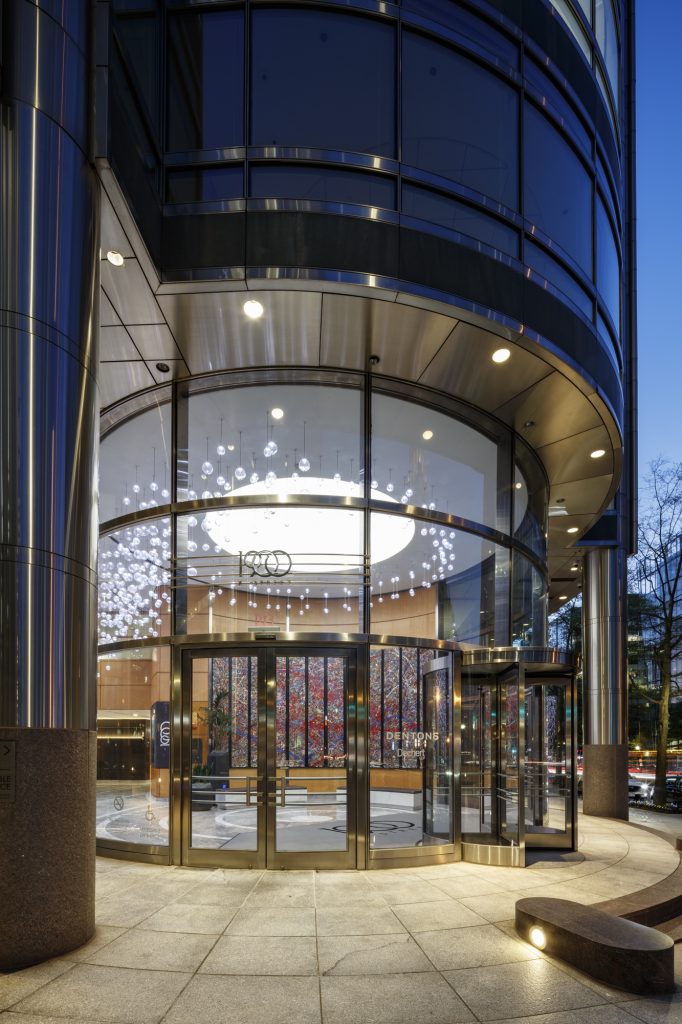
Exterior view of 1900K Building (2024) in Washington, D.C. Photo: Jim Tetro. Courtesy of the artist.
In what ways do you see this work continuing, or alternatively diverging, from the commissioned work at the Evening Star building?
I really see the pieces as two sides of the same coin, in conversation with one another. The Evening Star building, a historic Beaux Arts landmark built in 1898, is a gorgeous white marble structure, aesthetically and materially quite different than the César Pelli–designed glass and steel 1900 K building. The work at Evening Star is stately and calming, bringing a gravitas to the space; 1900 K is more uplifting and dynamic, flowing with the bright openness of the rotunda and soaring lobby.
Can you tell us what you are working on currently, or have plans to work on next?
I’m currently expanding my series “from darkness to light.” In the past, we’ve gone cosmic and expansive with the “Celestial” and “Astral” series, and now we’re looking towards the cosmic inner world as we’re exploring the transmutation of darkness into light. I’m expanding my practice after spending some time with the stars—now its time to come home and go deep within. I have seen the power of art to transform and create real and meaningful change on both the macro scale and the micro/personal level in my own life. The new work is about getting closer and closer to the center point, the place where change happens.
Learn more about commissioned art by Jumper Maybach here.